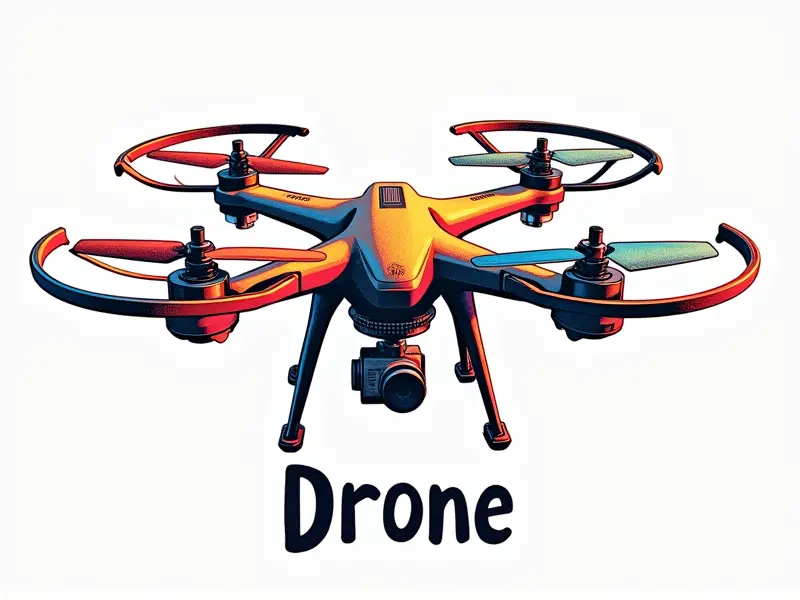Is FPV drone camera waterproof?

Is Your FPV Drone Camera Waterproof?
When it comes to flying your FPV drone, one of the most crucial considerations is its durability and ability to withstand various environmental conditions. However, a common question among hobbyists and enthusiasts is whether their FPV drone camera is waterproof or splash-proof. This article aims to provide a comprehensive understanding of how these cameras fare in wet environments.
Can FPV Drones Handle Rain?
Flying an FPV drone in the rain can be both exhilarating and risky, depending on your equipment's capabilities. While some drones are built with water-resistant features, others may require additional protection to ensure they function optimally during wet weather conditions.
Surviving the Elements: FPV Camera Protection
To protect your FPV drone camera from damage due to moisture and water exposure, it's essential to understand its waterproof rating or lack thereof. Most consumer-grade FPV cameras are not inherently waterproof but can be made more resilient with proper protective gear.
Protecting Your FPV Camera from Water Damage
Water damage is one of the most common issues faced by drone owners, especially those who fly in unpredictable weather conditions. To safeguard your investment, consider using water-resistant covers or coatings designed specifically for drone cameras.
Choosing the Right Protective Gear
- Waterproof Covers: These are essential for keeping moisture out of critical components.
- Silicone Coatings: Applying a thin layer of silicone can enhance water resistance without affecting camera performance.
- Covering the Lens: Use protective lens covers to prevent splashes from compromising image quality.
Testing FPV Drone Cameras in Wet Conditions
To determine if your FPV drone camera is capable of handling wet weather, it's advisable to conduct a series of tests under controlled conditions. This involves exposing the camera to light rain and assessing its performance afterward.
Steps for Testing
- Initial Inspection: Check if your drone has any built-in waterproof features.
- Spray Test: Use a sprayer or hose to simulate rain and observe how the camera reacts.
- Dry Run: Fly the drone in light, simulated rain to evaluate its stability and video quality.
Does My FPV Camera Need a Cover?
If your FPV drone camera lacks inherent water resistance, investing in protective covers is highly recommended. These accessories can be purchased from reputable retailers specializing in drone equipment or manufactured using DIY methods with waterproof materials.
Benefits of Using Covers
- Enhanced Durability: Covers provide an extra layer of protection against water damage.
- Improved Performance: By keeping moisture away, you maintain optimal camera functionality and image clarity.
Is My FPV Camera Resistant to Splashes?
Splash resistance is a common feature in many modern electronic devices, including some FPV drone cameras. However, it's crucial to verify the specific splash-proof rating of your equipment before exposing it to wet conditions.
Understanding Splash-Proof Ratings
- IPX Rating: IP (Ingress Protection) ratings indicate how well a device resists water and dust. Look for an IPX5 or higher rating for splash resistance.
Keeping Your FPV Camera Dry and Safe
Maintaining your drone's camera in dry conditions is vital to its longevity and performance. Regularly inspecting the camera for signs of wear, using protective gear, and storing it properly are key practices that can extend its lifespan significantly.
Storage Tips
- Dry Storage Area: Keep your drone in a dry place away from humidity.
- Absorbent Materials: Use silica gel packets to absorb moisture inside storage containers.
Waterproof Capabilities of FPV Lenses
The lens is the most vulnerable part of an FPV drone camera, and its waterproof properties are critical for maintaining image quality in wet conditions. While some lenses may be inherently splash-proof, others require additional protection.
Lens Protection Methods
- Clear Plastic Covers: Use clear plastic sheets to cover the lens without affecting visibility.
- Silicone Coating: Apply a thin layer of silicone on the outer surface for added protection.
Can FPV Drones Tackle Rain?
While many FPV drones are designed to handle light rainfall, heavy rain or prolonged exposure can still cause significant damage. To ensure your drone remains operational during rainy conditions, consider investing in waterproof accessories and maintaining regular maintenance schedules.
Maintenance Tips
- Cleaning: Regularly clean the camera to prevent corrosion from moisture buildup.
- Lubrication: Apply lubricants to moving parts as recommended by the manufacturer.
Surviving Storms with FPV Drones
Flying an FPV drone during severe weather conditions, such as thunderstorms or heavy rain, is extremely risky and not advisable without proper protection. Always prioritize safety when flying in wet environments.
Safety Precautions
- Weather Monitoring: Check forecasts before flying to avoid unexpected storms.
- Emergency Procedures: Have a plan for safely landing your drone if conditions worsen unexpectedly.
Conclusion
In summary, while many FPV drones and cameras offer some level of splash resistance, they are not designed to handle prolonged exposure to water or heavy rain. To protect your investment and ensure continued enjoyment of your hobby, it is vital to invest in appropriate protective gear and follow recommended maintenance practices.

